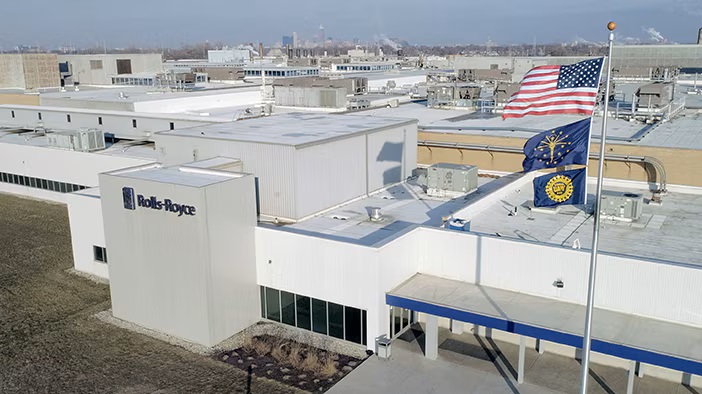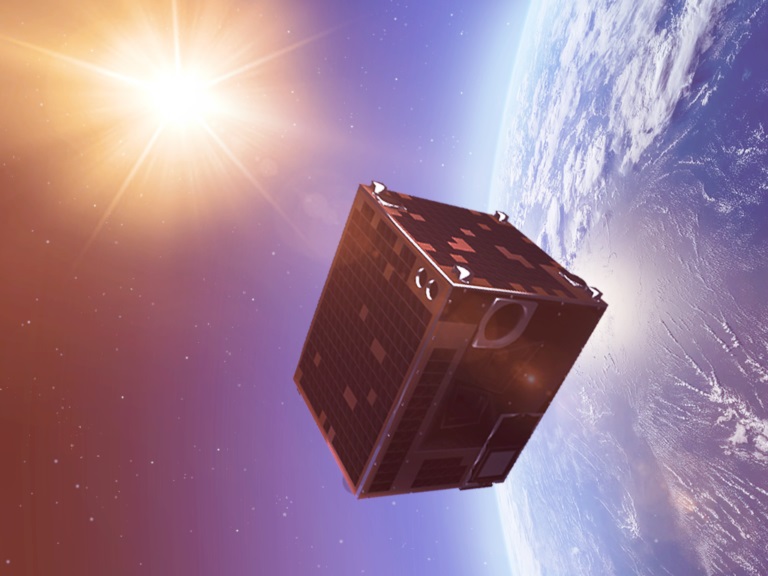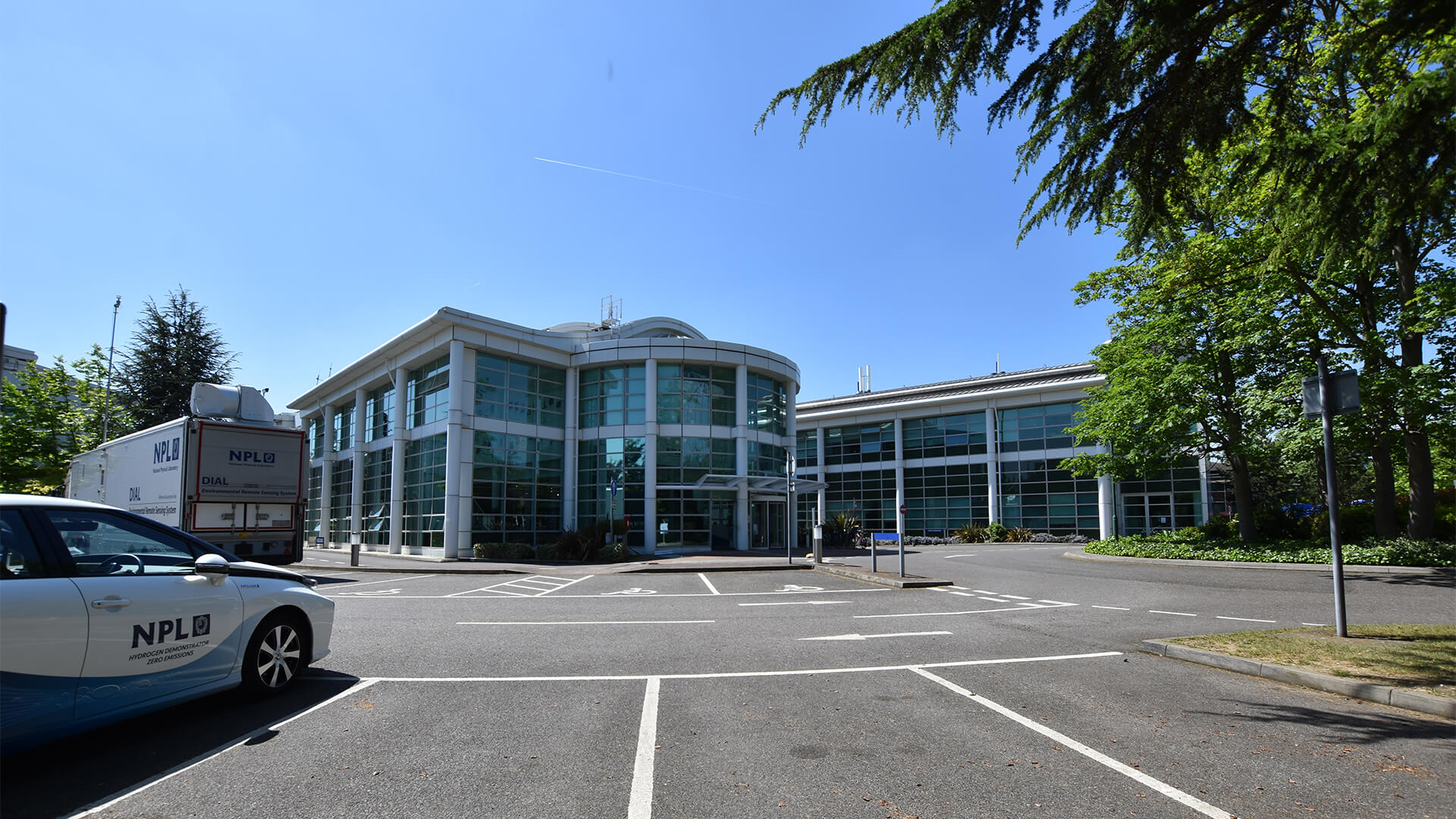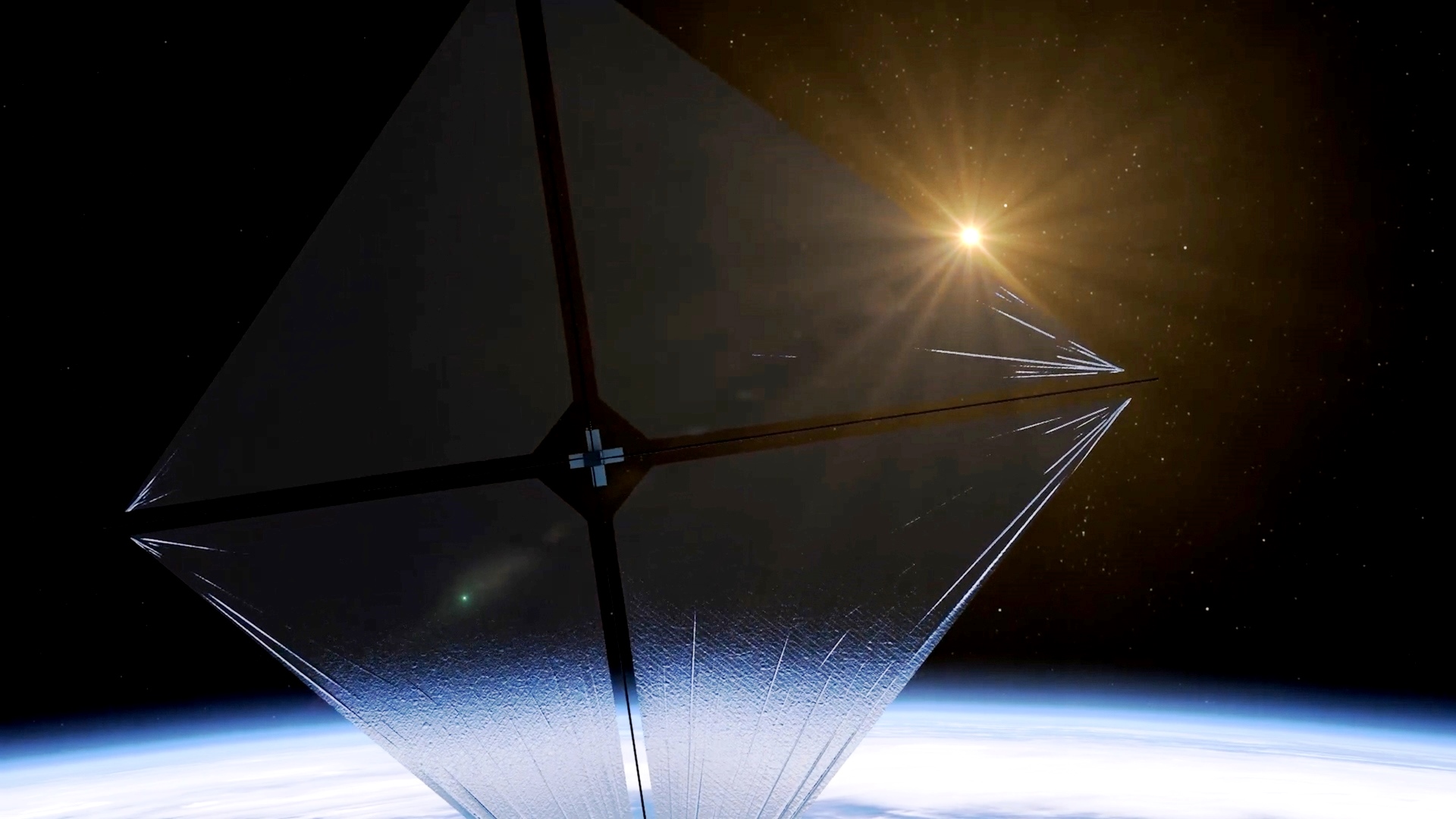Ground control arrives at University of Leicester

The University oversaw the visually impressive installation of a satellite ground station, a facility which orbiting spacecraft use to transmit their data back to Earth, on the roof of its Physics and Astronomy Building in April. The roof has been reinforced in preparation to receive the system. It’s 2.4 metre satellite dish is now visible to all working at, studying at and visiting the department, which has been at the forefront of space research for over 50 years.
The installation process was completed in two parts: the base first, then the reflecting dish, and by the end of the day the iconic ‘satellite dish’ profile was visible in the University skyline. The installation of the electronics, which will make finally make the station operational, will come at a later date.
The station is controlled from a new facility which is being built within the department, for space mission design, operations and training.
At 2.4 metres in diameter, the dish is much larger than most satellite TV systems and is designed to receive a range of types of data. The University of Leicester system is also steerable - it can ‘lock on’ to satellites passing overhead, and moves quickly to keep them in view. Because of this, special safety precautions like barriers and emergency stop buttons, will be placed around the dish to protect people working on the roof of the building, where it is being installed. Another difference between this system and a typical satellite TV dish is that it is capable of transmitting signals to satellites as well as receiving signals from them.
Dr Nigel Bannister from the Department of Physics and Astronomy, who has worked to bring the ground station to a reality for the past seven years, said: "We are installing the satellite ground station to support space research, space missions, and training. The Department of Physics & Astronomy has a long history of involvement in space research and space missions, as well as in the training of the next generation of space scientists and engineers, but until now it hasn’t had an on-site capability to send and receive data from missions it has been involved with. That changes with the installation of this facility.
"The ground station gives us a completely new capability to conduct research relating to space mission operations, space weather, and a range of other fields. Leicester has a long and illustrious track record in space mission involvement, and the ground station adds a new capability which we’re in an excellent position to exploit.
"From the teaching perspective, it’s very rare for students to have direct access to facilities like this, to receive and analyse data coming from satellites in real time as they pass overhead, and to be able to explore concepts like orbital mechanics in a practical way using real spacecraft.
"We’ll be incorporating experimental activities with our ground station into our teaching programme, enabling students to gain direct insight into these concepts, and to acquire skills that are directly relevant to future careers in sectors including space research, telecommunications, and electronics engineering. We are also going to use this system for a unique and powerful approach to training in space mission operations and communications, as part of our plans for the development of a nationally significant space park in Leicester.”
The dish will allow the Department to provide data reception and command transmission capability for future missions that it is involved in. These missions are likely to include small satellites built at Leicester, designed to study the Earth’s aurora and the way that the stream of particles from the Sun (called the “solar wind”) affects important systems on Earth, such as communications and satellite navigation systems.
The space scientists will also study ways in which large numbers of ground stations can be used in a coordinated way, to improve the way data are transmitted from space to the ground, as well as using the station to communicate with stratospheric balloon flights where scientists can perform small experiments and test future space technologies at 30-40 km altitude.
Dr Bannister added: "The ground station is a core part of the mission development and training facility which we began work on seven years ago. The installation of the ground station is a major milestone in this project; not only is it a very visible demonstration of the University’s commitment to sustaining and expanding its role as a major space research institute, but for me, it’s extremely gratifying to see the concept change from plans in a computer model, to a real facility, with all of the opportunities it represents. I’m very grateful to colleagues, particularly in the Department of Physics and Astronomy and in the University Estates team, for supporting the project.
"And I’m pleased that we’ve been able to support UK business in the process - the ground station was produced by Surrey-based CGC Technology Ltd, whose systems are in use around the world.”













